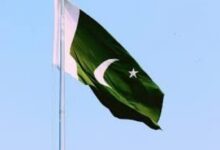The US presidential campaign’s shadow on the Russia-Ukraine war
In an attempt to sway American opinion over cutting off aid to Ukraine in the current conflict, Russian President Vladimir Putin extended an invitation to former Fox News anchor Tucker Carlson to participate in an interview last month. Putin’s target group consisted of conservatives and neoconservatives who were skeptical of Donald Trump, who is considering running for president again. His message was that the US would be better off engaging in negotiations with Russia since Russia would protect its interests in Ukraine to the very end and the latter had little chance of winning. Although Putin said that he was not considering deploying Russian soldiers to Latvia or Poland, his demands on Ukraine remained the same. He would demand that Ukraine be “denazified,” which would include maintaining its neutral status and replacing the existing government with one that is supportive of Moscow.

Trump has said that he would be against providing Ukraine with any further financial or military support as he moves closer to winning the Republican nominee for president. He would incite Russia to strike NATO nations that do not meet the target of two percent of GDP for defense expenditure. Trump said that he would put 10% taxes on all imports, and much greater duties on China, and he would not be against a trade war with European automakers.
Europe is agitated at remarks made by Trump and Putin. Europe is beginning to realize that, in the absence of US military assistance, they have returned to the era of the Cold War and are utterly unprepared. For decades, Europe has relied on US military protection and has not made adequate investments in new arms. Most European nations, in contrast to both Russia and the US, see the Ukraine war not through the lens of East-West competition but rather as a breach of a nation’s sovereignty and territorial integrity. Many nations in eastern and central Europe believe that should Trump win, a successful Putin would not stop in Kyiv and would seek to revert to a more Westernized state, reducing US support for NATO.
Sharp shifts in attitudes have resulted from Germany’s post-World Conflict II pacifist perspective being upended by Russia’s conflict with Ukraine. Olaf Scholz, the chancellor of Germany, has said that Russia’s effort to “swallow” its neighbor would fail and that “what happens in Ukraine will decide if our rules-based order has a future.” This year, Germany intends to spend almost 2% of its GDP on defense. With the shipment of Patriot air defense systems, artillery systems, and Leopard 2A6 main battle tanks, it surpassed the United States as Ukraine’s top military supplier in 2023.
Scholz said that the continent “does not live in times of peace” and urged EU nations to dramatically and immediately increase weaponry manufacturing. In order to provide its own armed forces and Ukraine with ammunition for anti-aircraft weapons, Germany has established a new plant to manufacture shells. Scholz has been pressuring other members of the EU to increase defense exports to Ukraine.
Most of Poland’s and Slovakia’s MiG-29 fighter aircraft have been sent to Ukraine. 325 modernized T-72 tanks and Leopards were also delivered by Warsaw. Air defense systems, light tanks, and Caesar howitzers have been delivered by France, while Ukraine is receiving infantry vehicles, anti-tank weaponry, and Archer howitzers from Sweden. In the next 12 months, the EU pledges to provide Ukraine with a million rounds of artillery ammunition. A number of European corporations, such as Germany’s Rheinmetall, Norway’s Nammo, France’s Nexter and MBDA, and Sweden’s Saab, have increased their own-source military supply manufacture. The manufacture of armored vehicles, howitzers, ammunition, drones, and unmanned underwater vehicles is growing inside Ukraine.
The European Union’s defense budget climbed by 13% to $345 billion in 2022 and by another 1% to $345 billion in 2023. In an effort to lessen its reliance on the US, the European Commission is considering restructuring the defense industrial base inside the union using funds from the US. The European Investment Bank is under increasing pressure to fund new defense projects by obtaining funding at favorable interest rates. Major EU nations like France, Germany, and Italy, as well as Canada, have agreements with Ukraine to provide long-term military support and ultimately aid in its integration into the EU and NATO. A $54 billion package of grants and loans to Ukraine for the next four years has already been approved by the EU.
With Trump threatening to cut off funding, the EU nations have become even more determined to stand with Ukraine. A recent addition to the yearly defense policy Bill, which President Biden signed into law last year, makes it difficult for Trump—even if he wins—to remove the US from NATO. Such a radical move needs a two-thirds majority in the Senate or an Act of Congress.
Additionally, Trump would discover that several of the US’s well-known adversaries, including China, Russia, Iran, and North Korea, are now in a much more dangerous situation. Given its role in the current conflict between Israel and Hamas and the Houthi assaults on US and partner ships in the Red Sea, the US would not be able to handle them on its own. If Trump makes a stupid move, China will just have more chance to weaken the transatlantic alliance.
The likelihood is that the conflict will linger as both Russia and Ukraine are getting ready to increase the number of soldiers they are deploying and because Europe is determined to prevent Russia from winning the war easily.
The conflict in Ukraine is an example of how the world’s power dynamics are changing as a result of the waning influence of long-standing power centers, the rise of new ones, and attempts to reorganize the system. These disputes portend a protracted era of political unrest and tensions since they won’t end until a consensus is reached on the new international order.







